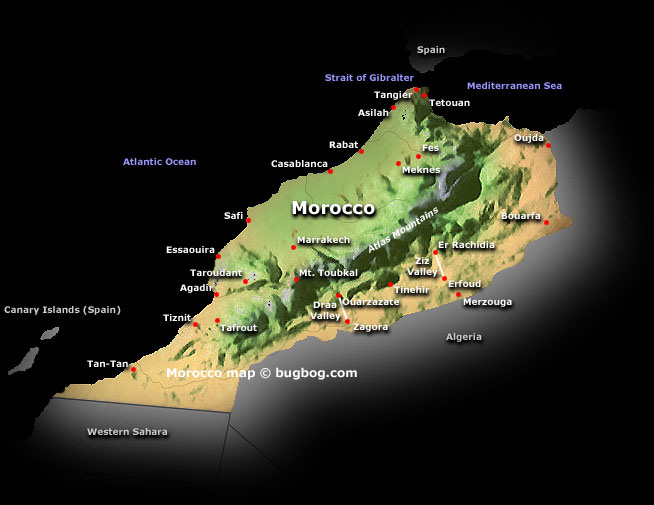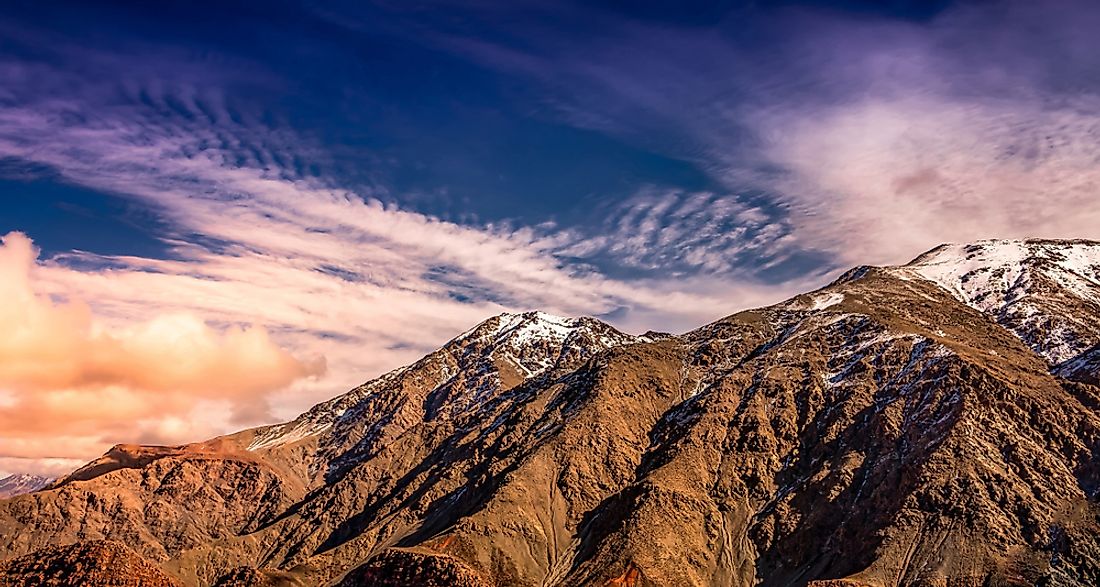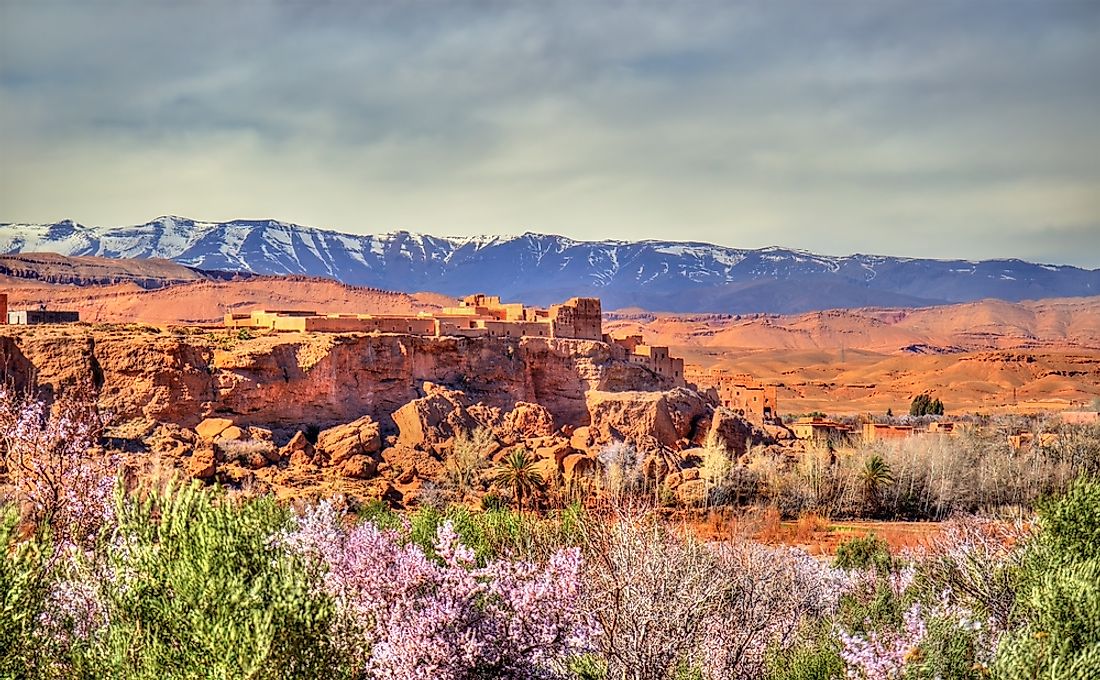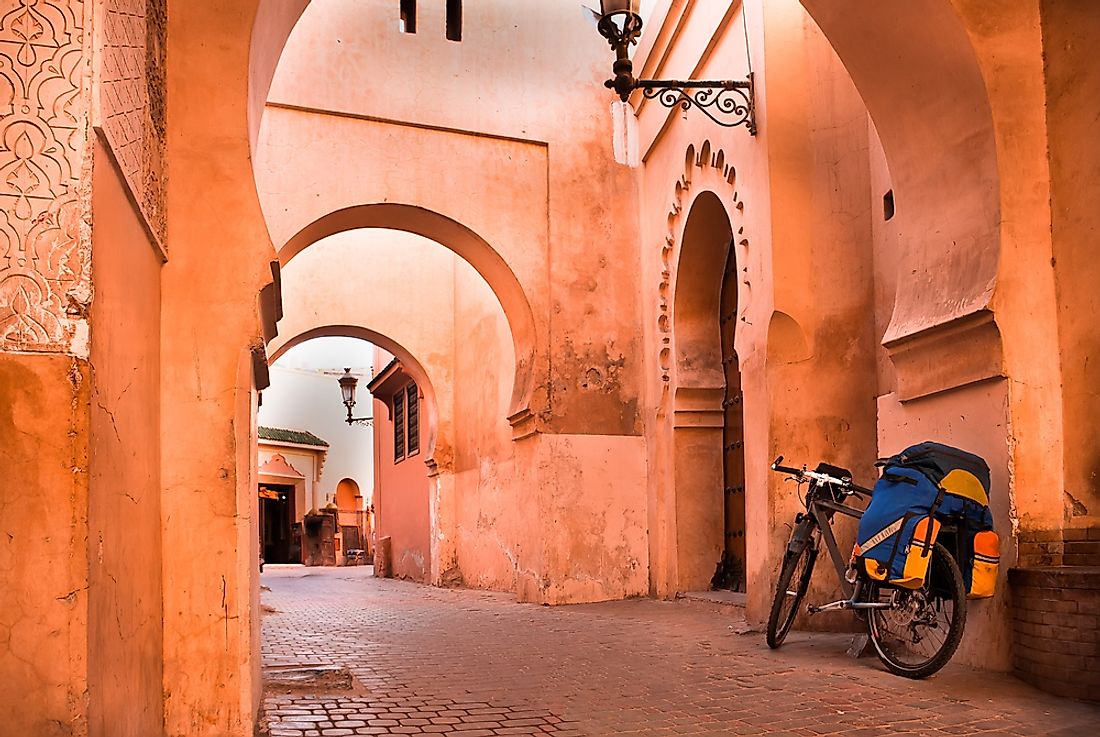Morocco Map - Interesting Facts You Should Know
Morocco is a sovereign state in North Africa. The Morocco map is bounded by the Atlantic Ocean in the west and the western Mediterranean Sea in the north, it borders Algeria in the east and Western Sahara in the south. The non-self-governing territory is claimed by Morocco.
Author:Finn WildeReviewer:Michael RachalApr 03, 2022119K Shares2.2M Views
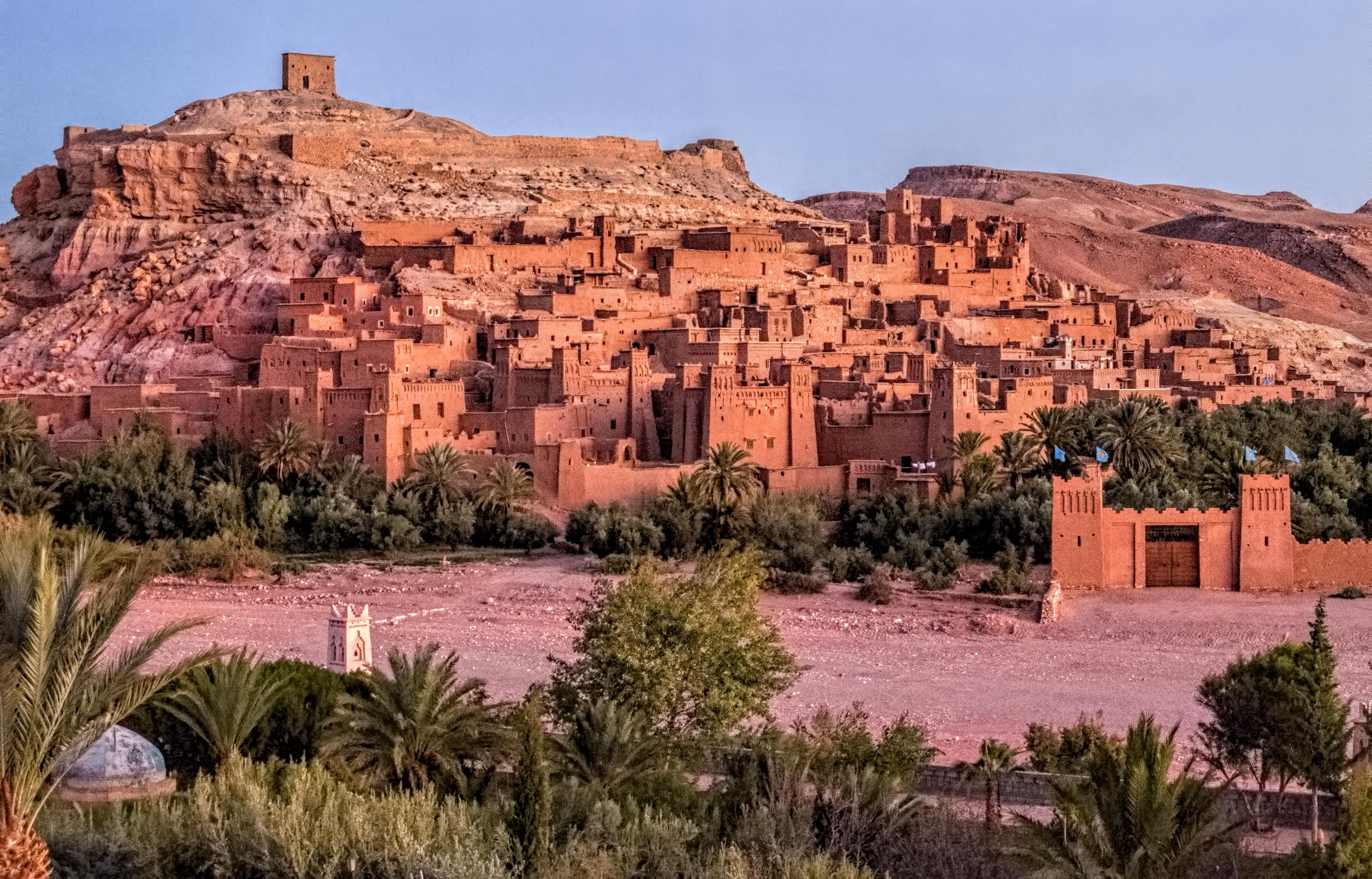
Morocco is a sovereign state in North Africa. The Morocco mapis bounded by the Atlantic Ocean in the west and the western Mediterranean Sea in the north, it borders Algeria in the east and Western Sahara in the south. The non-self-governing territory is claimed by Morocco. Since the establishment of the first Moroccan kingdom in 788 AD, the country has been ruled by a succession of dynasties, with the Alaouite dynasty assuming power in 1631. These numerous dynasties erected cities, palaces, forts, mosques, and other structures throughout the land. Several of them are considered architectural marvels. Morocco was also the cultural center of the medieval Islamic world, bringing together Islamic experts from around the Arab world to discuss religion and science. The following are some of the most fascinating facts about Morocco:
Interesting Facts About Morocco Map
Morocco Is Home To Africa's Highest Ski Resort
Oukameden is a ski resort in Morocco, approximately 80 kilometers from Marrakesh. It is the highest of its kind in Africa. It is located between 8,500 and 10,500 feet above sea level in the Atlas Mountains. The ski resort features six ski lifts and other amenities designed to enhance skiers' enjoyment of the sport.
Morocco Is The Home Of The World's Oldest Continuously Operating University
Fez is a Moroccan city, and Al Quaraouiyine University is located in Fez. Fatima al-Fihri, the educated daughter of a prosperous merchant, founded it in 859. For a long period of time, the institution served as the Arab Muslim world's primary educational and spiritual center. This university was home to a number of eminent Arabic scholars. Today, the university is a member of the country's system of public universities. This university's primary focus is on Islamic legal and religious studies.
Ibn Battuta Was A Moroccan
Morocco was the birthplace of the illustrious Islamic philosopher and traveler, Ibn Battuta. He lived in the fourteenth century and traveled extensively over the world, visiting North Africa, the Horn of Africa, South, Central, and Southeast Asia, and the Middle East. He kept detailed journals of his travels, which serve as historical treasures and disclose a great deal about medieval civilisation.
Morocco Was Founded By A Relative Of Prophet Muhammad
Idris I founded the Idrisid dynasty, which laid the groundwork for the future independence of Morocco. Idris was the great-great-great grandson of the Prophet Muhammad. Idris I sought sanctuary in Morocco in 786 after fleeing the battlefield of the Battle of Fakhkh.
Morocco Discovered The World's Oldest Human Sculpture
The Venus of Tan-Tan is a 6-centimeter-long human-shaped quartzite rock discovered in 1999 on Morocco's north bank of the Draa River during an archaeological expedition. The artifact is believed to date from the Middle Acheulean period, from 300,000 to 500,000 years ago. However, according to other archaeologists, the rock assumed the shape of a human as a result of natural weathering and erosion.
Morocco Is Home To A Rose Valley
In Morocco, the M'Goun Valley is also known as the Vallée des Roses. The valley produces between 3000 and 4000 tons of wild roses each year. These roses contribute significantly to the local economy. Local women harvest the roses and sell them to regional co-operatives. The majority of these roses are used by French perfumeries, while the remainder are used by local enterprises to make rose water, soaps, and other beauty goods.
Morocco Is Home To Africa's Busiest City Square
Africa's busiest square, Jemaa el-Fnaa, is located in the Moroccan city of Marrakesh's medina section. Locals and tourists alike go to this square in large numbers. The square provides an intimate peek into Moroccan culture. The square is entertained by Chleuh dancing boys, storytellers, magicians, traditional medicine vendors, and snake charmers. In the evening, food vendors selling regional fare are set up in the square. The Marrakesh souk is a traditional market that sells goods to both locals and visitors. It is located on the outskirts of Jemaa el-Fnaa. The square is surrounded by gardens, cafes, and hotels.
In Morocco, It Is Possible To Travel From The Sea To The Mountains And Into The Desert
Morocco is not only known for its historical and cultural beauties; it also boasts several natural wonders. The country's topography is diverse, encompassing beacheson the Atlantic and Mediterranean seas, the lofty peaks of the snow-capped Atlas mountains, and vast swaths of the Sahara desert.
Morocco Has Nine World Heritage Sites Designated By UNESCO!
Morocco is one of the most popular tourist destinationsin North Africa. The nation's political stability has aided in the rise of tourism in the country. Morocco's government is likewise committed to promoting tourism. Nine UNESCO World Heritage Sites are located in the country. Each of these locations has extraordinary historical, cultural, and architectural significance, making them well worth a visit.
Morocco Is The Country That Is Home To The Red City
Marrakesh is the fourth largest city in Morocco. Marrakesh's history, architecture, and culture are all incredibly rich. It was one of the most important imperial cities in the country. Ali ibn Yusuf, an Almoravid king, constructed red walls to protect the city. Numerous red buildings were also constructed throughout the city. The city is also known as "Red City" or "Ochre City" because of its hue.
Is Morocco A Rich Country?
Morocco has emerged as a key economic power in Africa, ranking fifth in terms of GDP (PPP). Morocco was ranked as the most competitive economy in North Africa by the World Economic Forum's African Competitiveness Report 2014–2015. The services sector contributes slightly more than half of GDP.
The Bottom Line
It is usual in Morocco for the bride to have her eyes closed during the ceremony if she is a female and is being married shortly. They don't wear their hearts on their sleeves, since love comes from the liver, not the heart.
King Muley Hassan used to play chess on a big board with captives as pieces, but instead of removing them from the board when taken, he had them decapitated - a novel twist on the ancient Indian rules.
For the complete body, Moroccans customarily use a "hammam," which is a series of three Turkish baths, each hotter than the last, which is a form of Moroccan steam cleaning.
Also, "Jannis" are legendary animals said to fall asleep in the toilet and get enraged when surprised. So, while approaching a Moroccan toilet at night, say "Rukhsa, ya Mubariqin," which means "Permission, O Blessed Ones." Watch out for "Maezt Dar L'Oudou" (the Goat of the Lavatories) at night, especially near mosques.
Also, the legendary film "Casablanca" (Morocco map center top) was totally shot in Hollywood, with no scenes taken in Morocco.
The country is connected to a rich history and culture, making it a one-of-a-kind destination worth visiting.
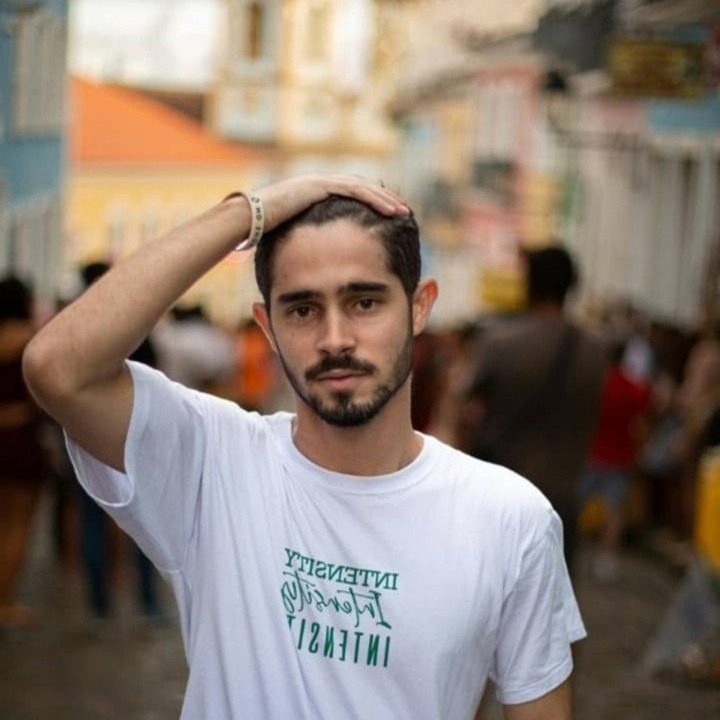
Finn Wilde
Author
For Finn Wilde, the wilderness is more than just a destination - it’s a way of life. Over the past decade, he has led multiple expeditions in some of the world’s most remote regions, from the icy fjords of Greenland to the rugged trails of Patagonia.
Finn emphasizes sustainability in all of his adventures, helping participants connect with nature while promoting responsible exploration. His expeditions inspire individuals to explore the great outdoors while fostering a deep respect for the environment.
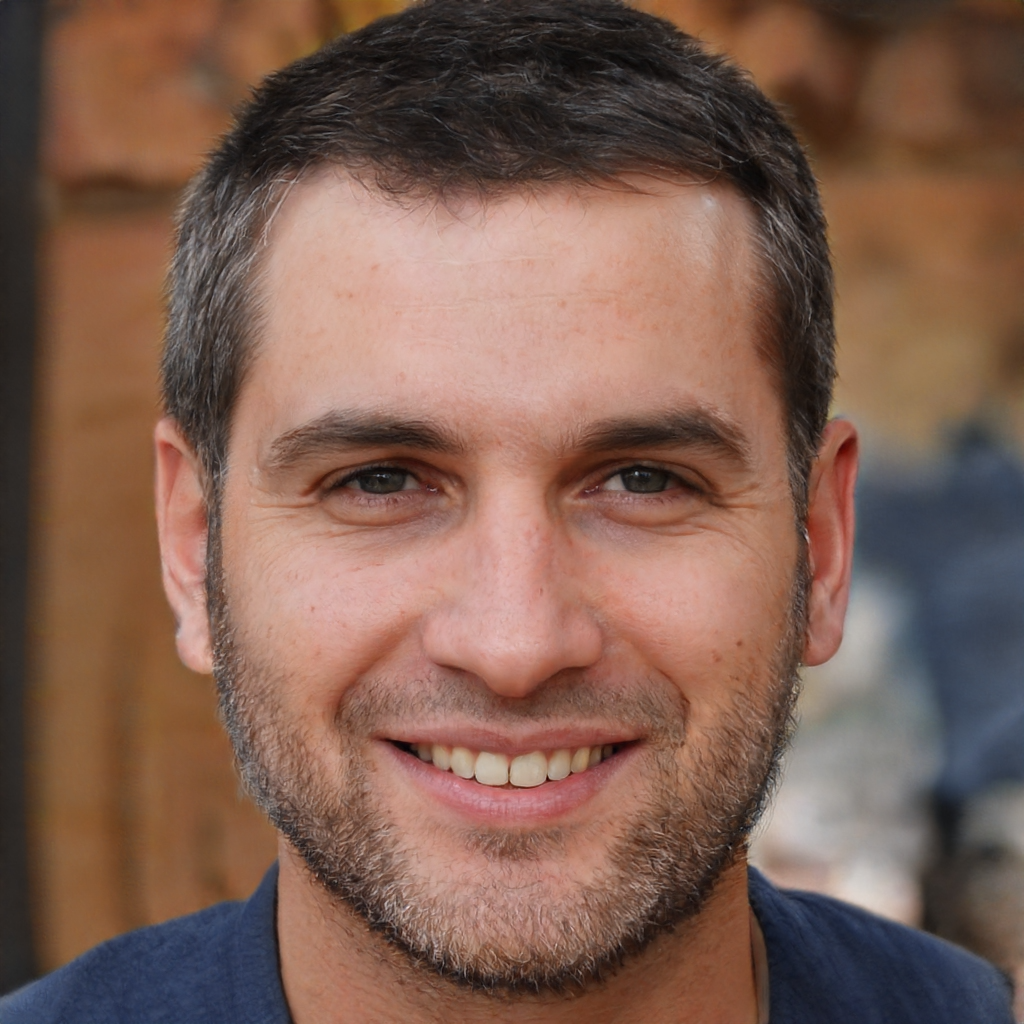
Michael Rachal
Reviewer
Michael Rachal believes that luxury lies in the details. With over 20 years of experience in the luxury travel industry, he has crafted hundreds of bespoke itineraries for clients seeking personalized, unforgettable experiences.
Whether guiding clients through private cultural tours or curating culinary journeys with world-renowned chefs, Michael ensures that each trip is tailored to perfection.
His ability to anticipate needs and exceed expectations has earned him a reputation as a leading expert in luxury travel.
Latest Articles
Popular Articles
